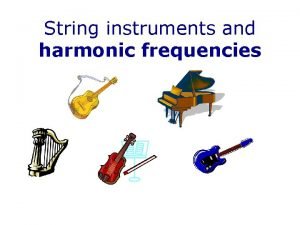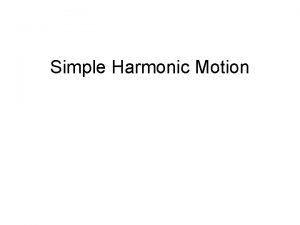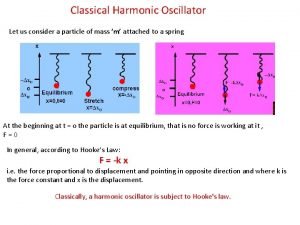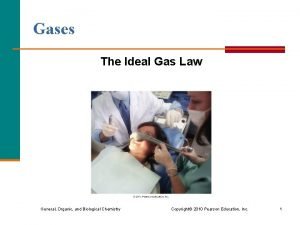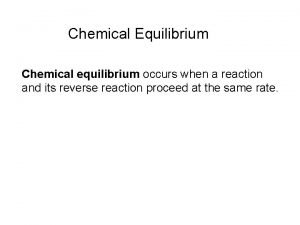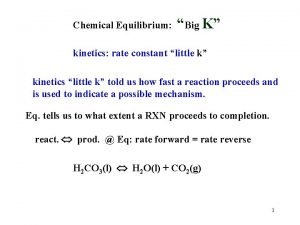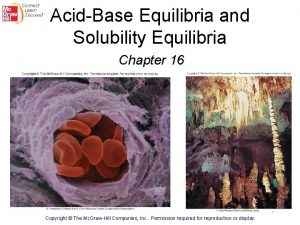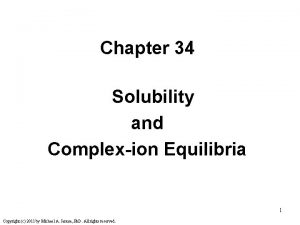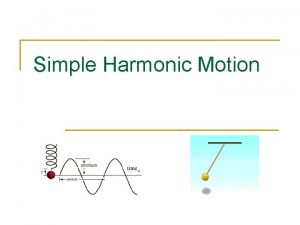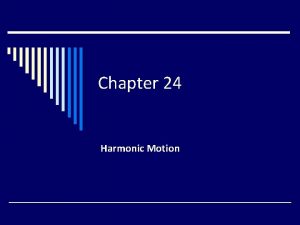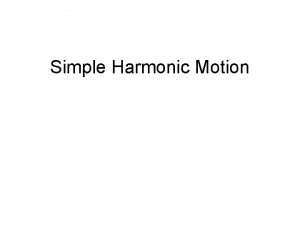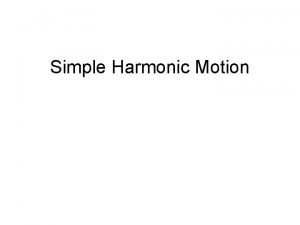The Classical Damping Constant For a classical harmonic










- Slides: 10

The Classical Damping Constant • For a classical harmonic oscillator, • The shape of the spectral line depends on the size of the classical damping constant • For n-n 0 >> g/4 p, the line falls off as (n-n 0)-2 • Accelerating electric charges radiate. • and The mean lifetime is also defined as T=1/g, where T=4. 5 l 2 • is the classical damping constant (l is in cm)

Collisional Broadening • Collisions with atoms of another kind (neutral hydrogen atoms) • Self-broadening - collisions with neutral atoms of the same kind • Perturbations by static ion fields (Stark effect broadening) • Adiabatic (electron doesn’t change level) and non-adiabatic (electron changes level) collisions with fastmoving electrons

Approaches to Collisional Broadening • Perturbations by discrete encounters • More important in line cores • The frequency shift depends on the separation Ør-2 for perturbations by an ion or electron (linear Stark effect) Ør-4 if perturbed atom or ion has an inner core of electrons (i. e. with a dipole moment leading to the quadratic Stark effect) Ør-3 from a resonance effect when neutral atoms of the same species interact (e. g. hydrogen) Ør-6 for van der Waals broadening (perturbed by a neutral atom of another species, esp. hydrogen)

Approaches to Collisional Broadening • Statistical effects of many particles (pressure broadening) – Usually applies to the wings • Some lines can be described fully by one or the other • Know your lines! • The functional form for collisional damping is the same as for radiation damping, but Grad is replaced with Gcoll • Collisional broadening is also described with a dispersion function • Collisional damping is sometimes 10’s of times larger than radiation damping

Doppler Broadening • • • Two components contribute to the intrinsic Doppler broadening of spectral lines: – Thermal broadening – Turbulence – the dreaded microturbulence! Thermal broadening is controlled by thermal velocity distribution (and the shape of the line profile) where vr is the line of sight velocity component The Doppler width associated with the velocity v 0 (where the variance v 02=2 k. T/m) is and l is the wavelength of line center

More Doppler Broadening • Combining these we get thermal broadening line profile: • At line center, n=n 0, and this reduces to • Where the line reaches half its maximum depth, the total width is

Combining the Natural, Collisional and Thermal Broadening Coefficients • • The combined broadening coefficient is just the convolution of all of the individual broadening coefficients The natural, Stark, and van der Waals broadening coefficients all have the form of a dispersion profile: • With damping constants (grad, g 2, g 4, g 6) one simply adds them up to get the total damping constant: • The thermal profile is a Gaussian profile:

The Voigt Profile • The convolution of a dispersion profile and a Gaussian profile is known as a Voigt profile. • Voigt functions are tabulated for use on computations • In general, the shapes of spectra lines are defined in terms of Voigt profiles • Voigt functions are dominated by Doppler broadening at small Dl, and by radiation or collisional broadening at large Dl • For weak lines, it’s the Doppler core that dominates. • In solar-type stars, collisions dominate g, so one needs to know the damping constant and the pressure to compute the line absorption coefficient • For strong lines, we need to know the damping parameters to interpret the line.

Line Profiles

Plot a Damped Profile
 Tension wave
Tension wave How to find the restoring force of a spring
How to find the restoring force of a spring Wave function of quantum harmonic oscillator
Wave function of quantum harmonic oscillator Universal gas constant
Universal gas constant Equilibrium of chemical reactions
Equilibrium of chemical reactions Display the address of intval using cout and intptr.
Display the address of intval using cout and intptr. What is pointer to pointer in c
What is pointer to pointer in c Big k vs little k chemistry
Big k vs little k chemistry Is ag an ion
Is ag an ion 9 pointers
9 pointers Complex ion formation and solubility
Complex ion formation and solubility
